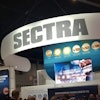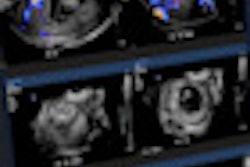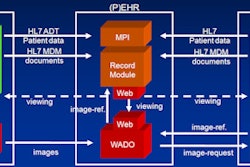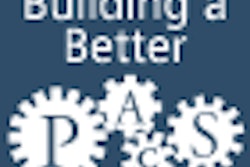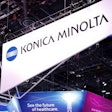Images stored on PACS networks contain a veritable treasure trove of information that could be invaluable in research and clinical practice. To gain easier access to those nuggets, researchers from Luxembourg have developed a software framework that facilitates data mining from DICOM image headers.
The first application developed to utilize the group's Performance and Monitoring Server (PerMoS) enabled the calculation of national CT dose values for six standard multislice CT protocols from hospitals in Luxembourg. PerMoS has also yielded improved data quality and time savings compared to paper-based analysis, according to Johannes Hermen of the Centre de Recherche Public Henri Tudor (CR SANTEC).
"The software is very powerful and flexible," he said. "It has proven scalability [having been used] in about 1,000 patients and 500,000 images from eight hospitals."
Hermen described PerMoS during a talk at the European Congress of Radiology (ECR) in Vienna, Austria.
DICOM-compliant images include both image data and metadata in the header (such as patient name, medical treatment, and imaging modality). Although this data can be utilized to answer statistical questions in a clinical environment, there isn't currently a generic way to access image metadata on PACS, according to Hermen.
In response, the researchers developed PerMoS, a software framework for acquiring and evaluating DICOM metadata. It can access metadata from hospital image management systems and was developed for both in-house and multicenter imaging studies, he said.
It can also provide live monitoring in the clinical environment, and it can support plug-in applications for specific uses such as CT dose calculation, he said. The resulting data can be accessed via a Web interface or data-mining tools.
PerMoS is based on the open-source JBoss application server, JBoss Enterprise Java Bean 3 (EJB3) architecture, and PostgreSQL database. A dcm4chee toolkit was used for DICOM operations, and the Upload Client was developed using Sun Microsystems' Java Web Start framework and hypertext transfer protocol (HTTP). The Web interface employs the JBoss Seam Web application framework and Asynchronous JavaScript (Ajax).
The PerMoS Administrator Client was created using Sun Microsystems' JavaSwing technologies, according to the researchers.
Data acquisition
Image data are acquired by first parsing the DICOM into separate fields, or tags. PerMoS allows the option to filter objects depending on the metadata and to specify which information will be stored.
Users can also elect to pseudonymize data such as by patient, physician, hospital, or manufacturer information, he said. The header is stored in a relational database by series, image, and tag.
In addition, the same acquisition module can be configured to support any application, Hermen said.
Within their institution, DICOM objects are received directly from the PACS or modality workstation using a DICOM send transaction. For external studies, the PerMoS Upload Client is first launched via a Web browser.
DICOM objects are then retrieved by the Upload Client, which watches a local folder for images, Hermen said. Data filtering and pseudonymization are handled by the client in-house and an image can be stripped out if it's not needed. Data are then uploaded to PerMoS via standard HTTP protocol.
In the data processing phase, header data is retrieved from the database and then processed and written to application-specific output tables, he said. A mapping and unit conversion table addresses issues arising from vendor-specific DICOM implementations.
The PerMoS Administrator Client then validates, controls, and completes the uploaded data.
Data mining can then be performed, and PerMoS can allow external applications such as the Konstanz Information Miner (KNIME) software package to directly access the stored data for analysis, Hermen said.
Users can view the status of their uploaded data with a Web interface. Applications within the PerMoS framework can also implement specific views or diagrams for the Web interface, Hermen said.
CT dose calculation
A CT dose calculation application was the first to make use of PerMoS, calculating national dose values of six standard multislice CT protocols. Hospitals in Luxembourg pseudonymized their CT image metadata and stripped the image data before using the Upload Client to upload it to the central server and database, which is located at CR SANTEC.
Dose calculation is performed by passing data through the CT-Expo software. Extended analysis and reporting were performed using the KNIME software package.
In the future, the research team aims to add new applications such as dose calculation for mammography studies, Hermen said. They would also like to add the display of final results in the Web interface, so users can directly see the results.
In addition, they will seek to collaborate with manufacturers to work on the quality and conformance of the DICOM header.
By Erik L. Ridley
AuntMinnie.com staff writer
May 24, 2010
Related Reading
Software offers alerts for patients with past CT scans, January 28, 2010
Studies spotlight high CT radiation dose, increased cancer risk, December 14, 2009
Data mining software has clinical payoff at Montefiore, June 29, 2009
New search tool finds the needle in PACS haystack, May 1, 2009
Copyright © 2010 AuntMinnie.com


